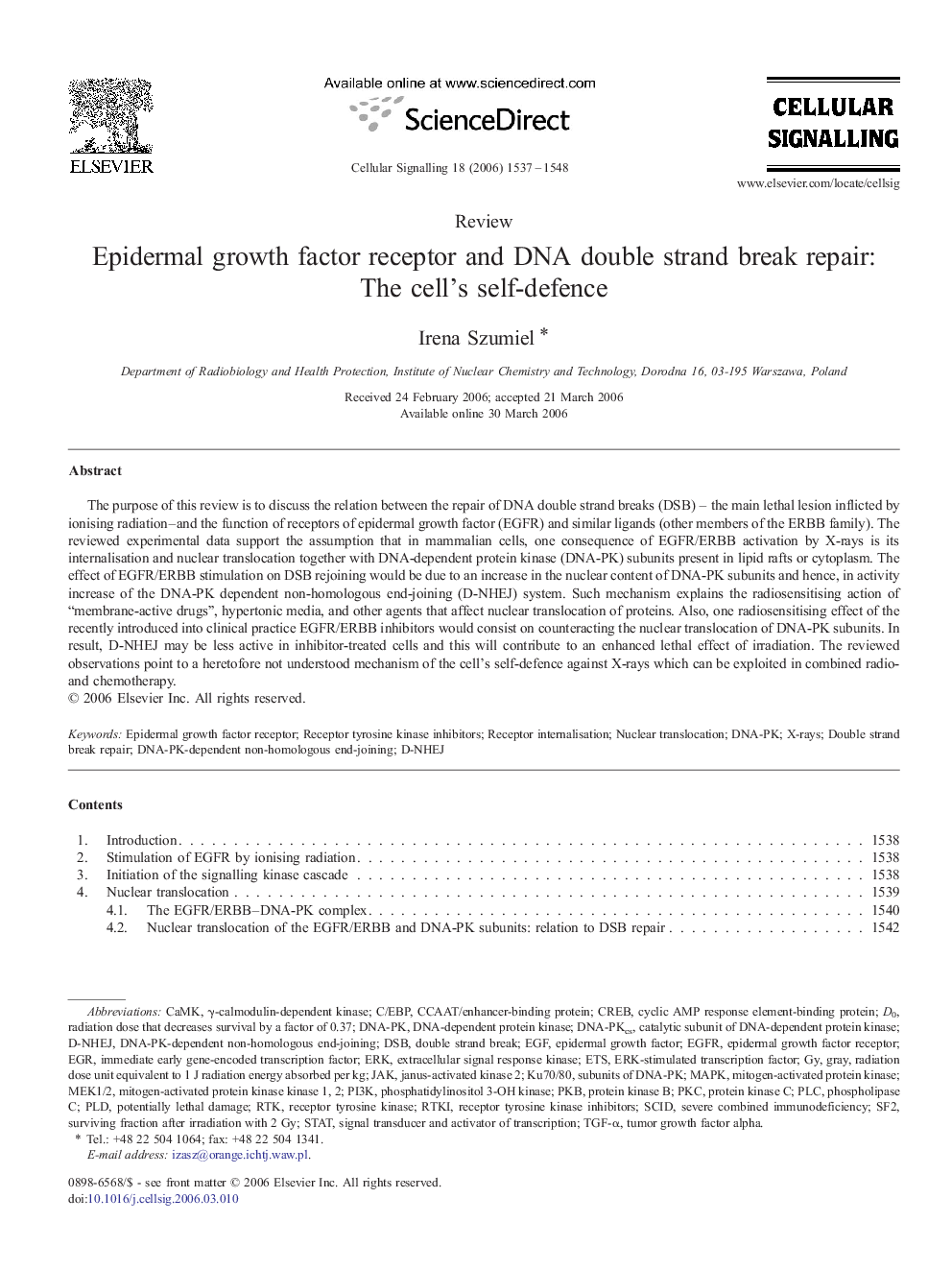| Article ID | Journal | Published Year | Pages | File Type |
|---|---|---|---|---|
| 1964432 | Cellular Signalling | 2006 | 12 Pages |
The purpose of this review is to discuss the relation between the repair of DNA double strand breaks (DSB) – the main lethal lesion inflicted by ionising radiation–and the function of receptors of epidermal growth factor (EGFR) and similar ligands (other members of the ERBB family). The reviewed experimental data support the assumption that in mammalian cells, one consequence of EGFR/ERBB activation by X-rays is its internalisation and nuclear translocation together with DNA-dependent protein kinase (DNA-PK) subunits present in lipid rafts or cytoplasm. The effect of EGFR/ERBB stimulation on DSB rejoining would be due to an increase in the nuclear content of DNA-PK subunits and hence, in activity increase of the DNA-PK dependent non-homologous end-joining (D-NHEJ) system. Such mechanism explains the radiosensitising action of “membrane-active drugs”, hypertonic media, and other agents that affect nuclear translocation of proteins. Also, one radiosensitising effect of the recently introduced into clinical practice EGFR/ERBB inhibitors would consist on counteracting the nuclear translocation of DNA-PK subunits. In result, D-NHEJ may be less active in inhibitor-treated cells and this will contribute to an enhanced lethal effect of irradiation. The reviewed observations point to a heretofore not understood mechanism of the cell's self-defence against X-rays which can be exploited in combined radio- and chemotherapy.
